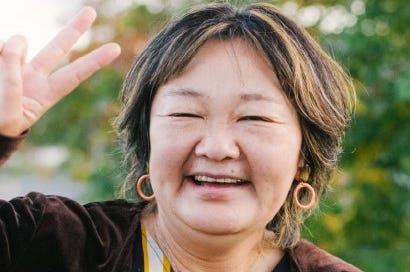How the WE League is aiming to get Japan back on top
The new Japanese professional league is entering its third season, and WE Board Member, Miyuki Kobayashi, discusses the positives and the challenges of women's football in Japan...
After what the nation itself would admit was a brief decline, Japan’s national team roared back into action at the 2023 World Cup with a brand of exciting, attacking football and a new generation of young, talented stars who looked ready to take the world by storm.
Few have forgotten their 4-0 demolition of eventual champions Spain, and for a while it looked like Futoshi Ikeda’s side may be well placed to go and win a second world title, until Sweden decided they had other ideas.
Japan’s constant presence at the top end of the women’s game though is no coincidence, and their rebirth over the past 12 months certainly isn’t, two years on from the launch of the new WE League in the country, or to give it its full title, the Women’s Empowerment League.
Named so because the new domestic league, created to offer professional opportunities to women in Japan, is about more than just creating talent on the pitch, it is aimed at changing the whole perception of women and women in sport in the country, which is still a challenge despite the success Nadeshiko has enjoyed, including their shock 2011 World Cup win just months after a devastating earthquake claimed thousands and thousands of lives.
Check out over 100 more unique stories in WFC’s Premium section, available for just £45 for 12 months, paid in one go, or a £6 a month rolling subscription.
All subscriptions come with a 7-day free trial to allow you to explore our full archive.
Plus, guarantee you everything that is to come over the next 12 months…
Plenty of planning has gone into how to make it both unique and a success. It is heavily subsidised by sponsors, primarily title sponsor Yogibo, while for the first few years – the league has just begun its third season – there is no relegation to allow teams to grow organically and allow for expansion, with Cerezo Osaka this season joining the initial 11 teams to bring the figure up to 12.
17 clubs initially applied, showing plenty of interest, and rules have been implemented, such as five players must be signed to professional contracts at each club, and these five players do not have to be subject to the league’s salary cap.
The Japanese Football Association and the league itself has made big financial promises, such as the JFA subsidising wages for any players who come to the league from other South East Asian nations, while the league will subsidise wages for players from other top-ranked FIFA nations, though those are currently at a premium.
“When we won the World Cup in 2011, it united the society. Many people suffered in the earthquake, and it brought people together…”
Subsidies are also available for relevant expenses, such as translators for foreign players. All these costs add up, and as current board committee member Miyuki Kobayashi, one of the brains behind the league, has admitted in the past “If WE League loses those subsidies, we will be in trouble.”
Kobayashi is very honest and open about the concept, idea behind and future of the WE League which she helped to create. She started playing football in college though chuckles she “wasn’t a very good player” yet continued playing in the USA when she went to study English, and she was so dedicated to the game, she founded her own women’s team at university, and her USA attachment is still evident as she talks about “soccer” and her background within the sport.
“The attitude in Japan was soccer was a sport for men,” she admits, bluntly. “We [her university team] didn’t have an official team, we didn’t have a pitch to practice, people weren’t really interested, but in the USA it’s a sport for the women, I was very surprised how different the perception was.
Keep reading with a 7-day free trial
Subscribe to Women's Football Chronicles to keep reading this post and get 7 days of free access to the full post archives.



